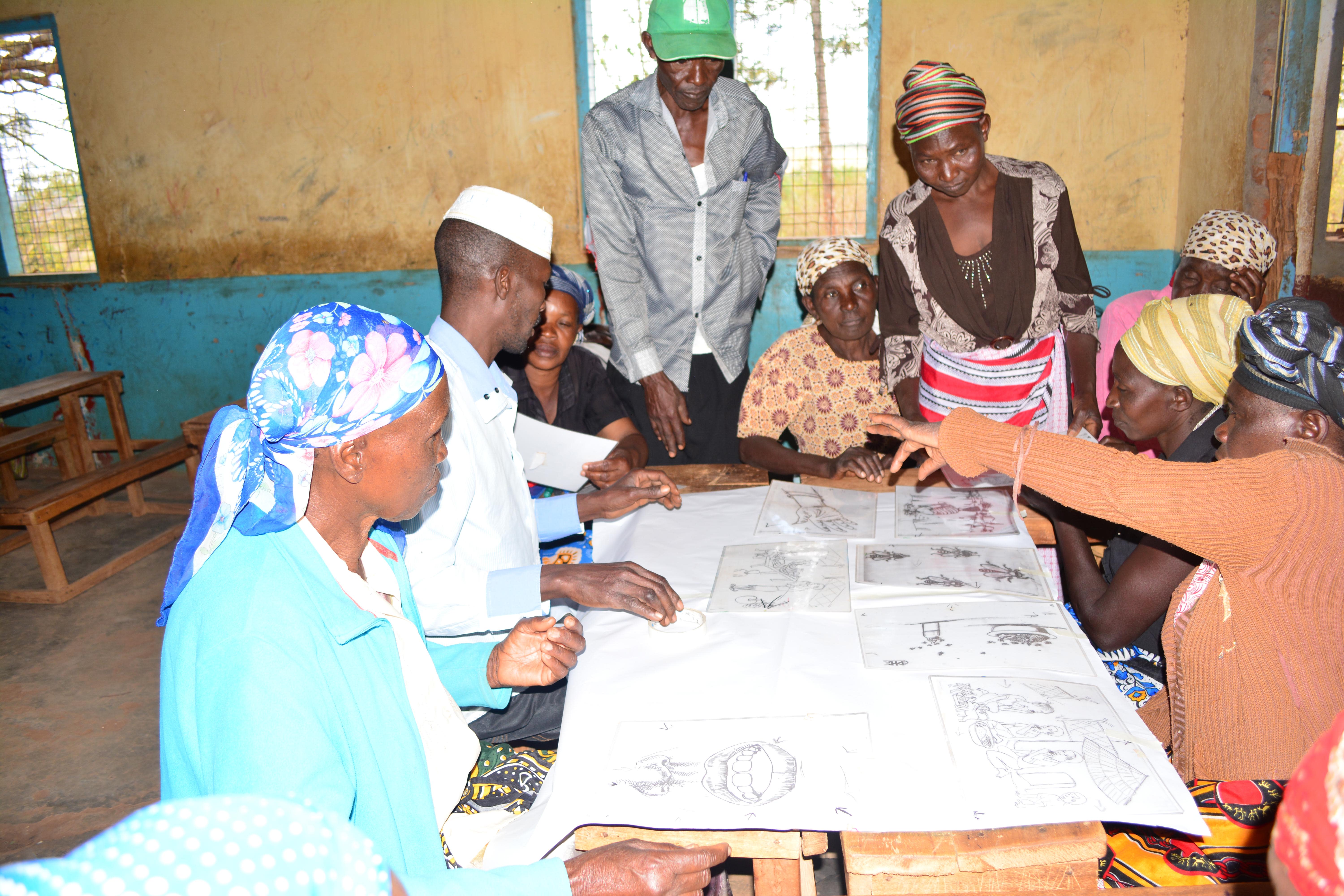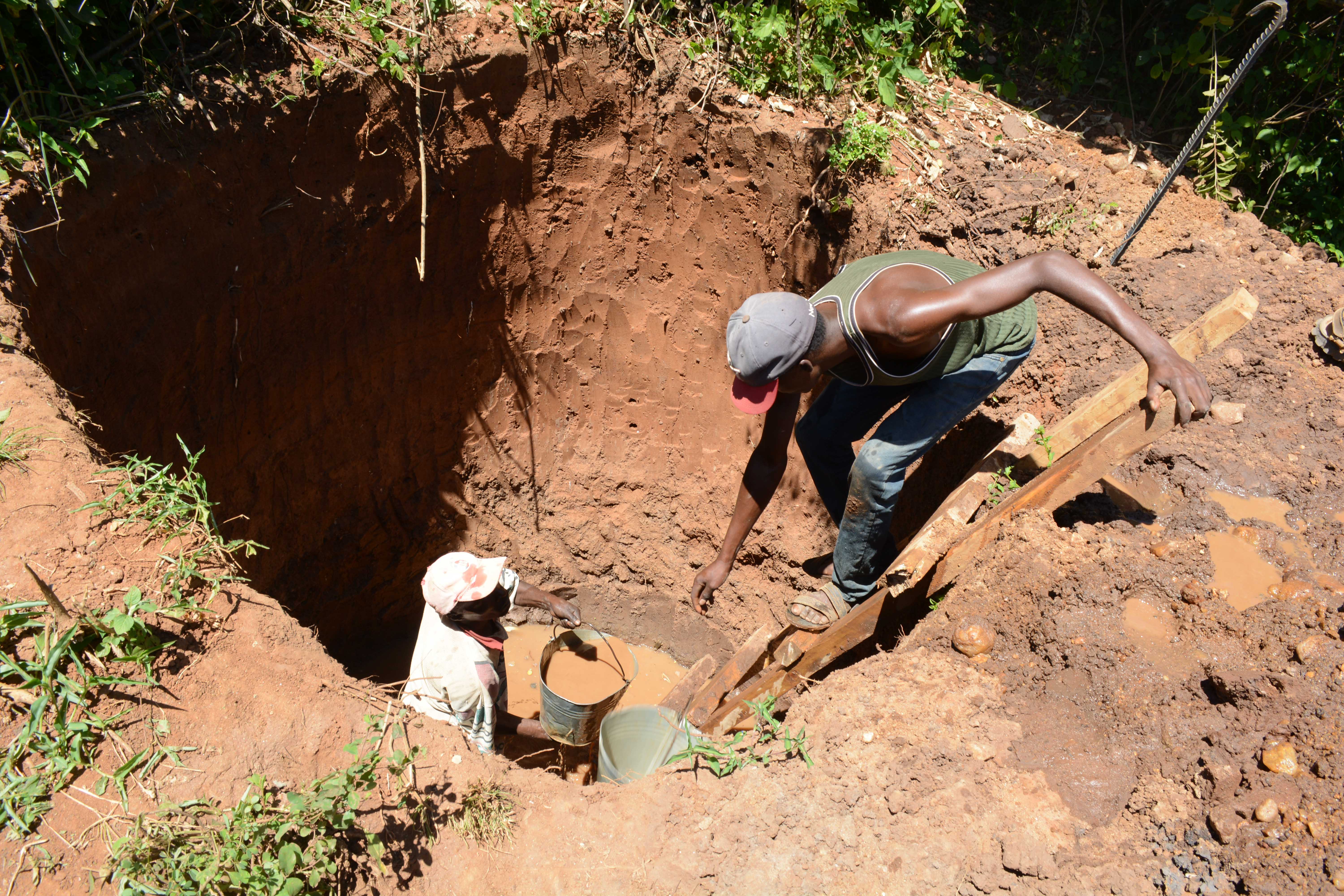This project is a part of our shared program with Africa Sand Dam Foundation. Our team is pleased to directly share the below report (edited for clarity, as needed).
Welcome to the Community
Kithito Andu Akuu ma Ngaa Self-Help Group was formed and certified in the year 2014. The group is found in Ngaa Village that is home to 800 households! This translates to thousands living in the area. (Editor’s Note: While this many people may have access on any given day, realistically a single water source can only support a population of 350-500 people. That’s why we’ve formed a relationship with this group and plan to support them to do multiple water projects over the next couple of years until adequate water is available. To learn more, click here.)
The group's main objective is to enhance their overall welfare by conducting fund sharing, establishing tree nurseries, and weaving baskets and sisal rope. Their mean age is 43, while the mean of the members in each household is five. In terms of education level, a recent survey established that household heads are the most learned - some of them have been to college or technical school.
Water Situation
Most of this group keeps large plastic containers outside to catch water when it rains. However, the dry season is long and forces families to search elsewhere. This search takes them over two kilometers away to the river.
Water isn't flowing at this river. People have to dig in the riverbed until they hit water. They fill their 20-liter containers with the water from this hole, and load it onto a donkey or ox-drawn cart. If a family can't afford a pack animal, they must hoist the heavy container up and carry it all the way home themselves.
This water is open to contaminants from many different sources. Livestock brought back and forth drink freely from the hole, often relieving themselves somewhere along the way. When it rains, even more waste is washed into this water source, not to mention the dirt itself that erodes and muddies the water.
There is rampant waterborne disease and the resulting treatment costs are huge, especially for these families that make so little. Long hours are spent walking to and lining up at the scoop holes.
Farmer Alice Nthenya Mulinge said, "We fetch water from open scoop holes in the river. This water is dirty because we often find all sort of dirt. We expect to access clean water from our sand dam and shallow well because it will be covered and water seeping in will be clean."
Sanitation Situation
Every single group member's home has a pit latrine. The buildings' materials depend on the economic status of each household, ranging from sticks to concrete. However, less than half of households have and use hand-washing stations.
There is a collective positive attitude towards sanitation and hygiene; people do their best because they know living in a dirty environment can and will cause health issues.
Plans: Hygiene and Sanitation Training
To address gaps in hygiene and sanitation practices in Ngaa Community, training will be offered to self-help group members on three consecutive days. The members will learn about useful practices and tools to improve health, and then will be able to share those with their families and neighbors. Water transport, storage, and treatment methods will be taught, and hand-washing will be a focus. Group members will learn how to make their own hand-washing stations with everyday materials. To motivate participants, we must show the links between these activities and their people’s health.
Plans: Hand-Dug Well
This hand-dug well will be one of many construction projects to come in the next few years. We will spend a total of five years unified with this community to address their clean water shortage. More sand dams will be built to transform the environment. As the sand dams mature and build up more sand, the water table will rise. To safely access this water, hand-dug wells like this one will be installed.
This particular hand-dug well is being built adjacent to this group’s ongoing sand dam project (click here to see). We have supplied the group with the tools needed for excavation. With the guidance of our artisans and mechanics, the excavated well will be cased, sealed with a well pad, and then finished with a new AfriDev pump.



 Rehabilitation Project
Rehabilitation Project





























